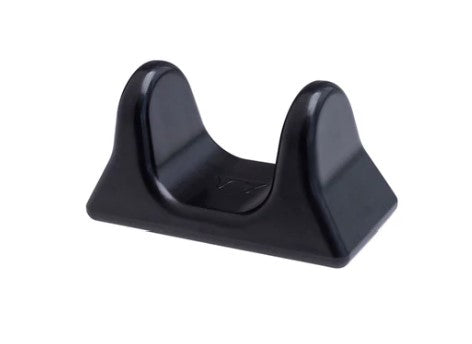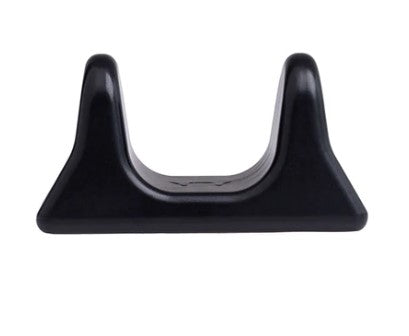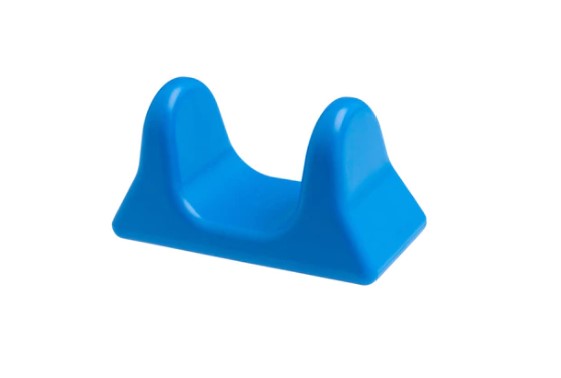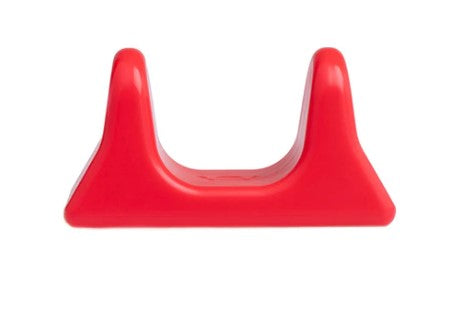“Be kind to your neuromuscular system, and it’ll be kind to you.”I said this in an Instagram post I made a few months ago. It’s cheesy, but true. You can set yourself up to get stronger during an extended rehab phase. Rather than just getting back under a bar, get back under a bar far better than you were initially. There’s a common misconception that we should put rehab into its own separate training category and that there’s this slow comeback. It’s a totally different part of your brain, it feels like. And, true, it’s different, but I truly believe that when done right, you don’t just get back to previous strength levels — you do get stronger.
Our generation is of the huge benefit that we’re learning just how big a role the nervous system plays in levels of strength, force production, inhibition, movement patterning, and even biochemical responses. Yes, histology, passive and active structures, and joints themselves obviously still require a certain degree of time to heal and play their part in the game. But when I think about the role of the PT and rehab side of things in our sport, it’s incredible.
I’d love to pick brains on what “rehab” was like before the internet when textbooks told you just to rehab the soft tissue and maybe do a few things on this new thing called a Bosu. When the constant solution was “blood flow” or “move somehow to stabilize things.” I’m going to bet that Dave, Bob, and others have some awesome stories about what they did to rehab or how to get through a meet back in the day.
RECENT: Combatting Shoulder and Elbow Pain from Low Bar Squatting
You know what’s been really cool, though, about talking with Dave about things? He keeps bringing up words like "inhibition." I’m convinced he knows more about injury rehab than most PTs out there. Dave is an opinion leader, and our sport and how we think about longevity are changing.
I see lifters a lot of time come back from injury not quite themselves, or maybe they find a bunch of ways to train “around” an injury but the same pattern that got them injured, to begin with, ends up causing issues somewhere else down the line. Injuries compile, and slowly, one part of the train after another breaks down until someone is “done with heavy lifting.” I also see more and more lifters coming back stronger when they do things right.
I haven’t competed since Boss of Bosses 3, August 2016. Actually, I’d hardly been able to train from August through early spring. I came into that meet with a partial tear in my right glute med, as well as some neural and discogenic issues through my right side.
I spent five months not touching anything remotely heavy but doing what I thought were the most beneficial things for myself. Within four weeks of touching weight over 70% for the first time, I was back squatting 325 (my opener from that meet) for a triple and pulling around 84% for sets of six. I attribute that largely to what our generation of lifters and forward-thinking PTs are encouraging people to do right.
If you anticipate an extended period of time off, there are lots of things you can do right to avoid common mistakes. Your goal should be to come back stronger and tremendously benefit from time away from heavy weight.
Mistake 1: Training Broken, Isolated Movements
Get outside of your powerlifting box. Not all rows are created equal and not all hinge variations are created equal. Actually, can you even properly hinge?With regard to pattern development and restoration: If there is one thing I will stand by as a PT and a strength athlete, it is that human beings should have basic movement competencies and that if those basic competencies break down in ability or quality, restoring those patterns will oftentimes clean up the dysfunction that contributed to your injury.
You should be able to properly and effectively hinge, squat, pull, press, and carry. Dr. John Rusin and Dan John have been hugely influential for me in this regard. We often times brush off these movements because they don’t look quite like our lifts, but your nervous system’s perception of threat (and what plays a huge role in stability and force production) throughout a range can be thought of as a barometer of its health. Pay attention to the details and what they feel like, and perform them correctly through what range of motion you can. Look for consistent improvement.
With regards to training specificity: Perform your movements the way you intend for them to carry over to your big three, but take your cheat out of the equation. If you can’t load for a squat, but you need improvement in upper back strength, choose movements that specifically mimic your position and demand. Rather than arbitrarily doing some chest supported rows, perform them in a way that emulates your back rack position to strengthen your opportunities without loading injury. On a bench day, row in a position that emulates your grip width, and utilize that pattern. I guarantee submaximal weight with good control throughout the entirety of the range (like bar to chest) will absolutely wreck you here. Depending on which lift you are training that day, utilize your accessories to strengthen the entirety of the pattern you need to strengthen, rather than isolated body parts.
Mistake 2: Rushing the Process
Keep in mind that the more injuries you’ve compiled and worked around, likely the longer your process will be to re-establish your baseline and improve it. You’ve adopted a number of layers to peel off, so give yourself the time and attention you deserve. There is no rush. There are more meets. There’s plenty of time left to train if you’re in it for the right reasons. Check outBen Pollack and
Joe Schillero’s recent content for more on that.
Going too heavy, too quickly and ignoring proper movement with appropriate weight is another problem. I have never, ever regretted a client or myself going “too light” in a session when it’s accompanied by smooth, solid, non-painful movement that let the body stop freaking out and learn to love lifting again. It’s hard to speak to specifics on when is enough or too much, and when to push more, because there really is a bit of a case-by-case basis, and physical rehab is as much mental and neuro-psychological as it is histological. This is where consulting with a professional becomes an incredibly useful tool.
I can speak from experience here. I dislike talking about my own process too much because it is different for everyone, but my narrative describes a process and what it may look like for many. I spent lots and lots and lots of days with incredibly submaximal weight. From August through most of January (a long time, but also a relatively serious injury), a majority of my squatting sessions were done with somewhere between 135 and 175 pounds. July 30, just before BOB3, I hit a 360 training max, so roughly 35-40%. Not ideal. Could it have gotten better faster if I’d taken time off completely? Maybe. But I knew I needed a lot of technique work, some hypertrophy work for stability, and to ultimately re-create a positive relationship with a movement. Every session I was able to get under the bar without pain was a win, regardless of the weight. The goal was proper movement with appropriate weight, and to quit anticipating pain and rekindle positivity.
Mistake 3: Getting Too Feely
Rehab can feel like a roller coaster: there are days things feel incredible, and the next you can’t believe you thought you were making progress at all.Get some tangibles. Find some things you can modify and measure. Find some ways you might be able to feel a difference. Write them down because you will need to come back to it when things feel slow. It’s way too easy to “feel” the day-to-day and lose the forest through the trees. Before you even start, you need to have some objective measurables you can return to.
Get objective eyes. I’m so fortunate that my boyfriend is as calm, level-headed, objective, and honest as he is. Surrounding yourself with the right people that are truly invested in your improvement and won’t give you a lazy “Yep, looks good” answer when it doesn’t look good is key. On your high days, you need them to keep you on track and not push the envelope too far. On the low days, you need them there to look at what’s actually happening, rather than just your “feels” about the process, with you. Your objective tangibles? This person needs to know at least a few of them so you can actually engage in dialogue.
Stick with the plan, modify as needed, and change your mindset. Modification does not mean failure. It’s a change in the recipe, and truthfully, should be expected to some degree. Embrace it, and be objective. I cannot emphasize enough the importance of recording these details not only so you maintain objectivity, but so you can learn throughout the process.
Mistake 4: Brushing Off the Fluff Work
Some of the wisest words I’ve ever heard, from the mouth ofMarilia Coutinho: “Stability is the mother of strength.” Those basic patterns I mentioned in the first mistake are so fundamental. You HAVE to build your foundation. One of the biggest mistakes I see people make is taking this out too early. Once you return to heavier training you’re not out of the woods yet.
This is what I mean by fluff work: Anti-extension exercises properly executed. Actually taking your time with your warm-ups and being intentional about feeling what you need to. Noting the quality of your main movements and making sure to address what’s “off” for five minutes at the end of your session. Maybe it’s that you’re starting to extend at the bottom of your squat, or your shoulders are rolling as you break your press off your chest. Your fluff work can be thought of as unloaded or sub-maximal work that encourages whatever pattern you looked to generate through your rehab.
I’ll say it again: stability is the mother of strength. When you’re tired and ready to go home, spend five minutes.
Mistake 5: Feeling What You "Can't" Instead of Embracing Can
Some of this is mental, and some of this is still putting in the work to get stronger.The minute your mindset becomes focused on all the things you can’t do, you’re out of the game. Done. Your mindset for the entire session changes and you’ve likely lost out on time that could be entirely proactive in some capacity. I get the discouragement, and I’m not saying to feign glitter and rainbows, but be forthright with yourself. Think of it as, “I don’t love I can’t squat heavy. But I can take today to work on core and bracing strategies, and I can do some single-leg work.”
There is almost always SOMETHING you can be doing to improve, but it probably won’t look like what you feel like or want to be doing. This is where a little tough love comes in and I tell you that you either have the discipline to do those things or you don’t. You are accountable only to yourself and have no one but yourself to blame for refusing to take the time and be mentally strong enough to change your mindset rather than pout about what you can’t do.
A solid friend of mine, Michael Greeno, and I have a mindset of being opportunistic. The minute you mentally commit to that word, you’ve shifted from a state of neutral at best (more likely negative) to positive on the tone scale, and on a biochemical level, that only does fantastic things for you. On the good days, give yourself a little leeway to milk the positives and push the envelope a bit, especially if you’re in a phase where you are directly training your main movement.
Mistake 6: Obsessing and Chemical Stress
You aren’t doing yourself any favors by fixating. Have you noticed that we condition our minds to think about certain things or to process a certain way? The more we access a certain mindset, it kind of becomes our baseline.You have control over this.
Aside from all the chemical changes that come from stress, and how not helpful they are, your thoughts can become self-fulfilling in a way. I find that the most helpful tool I give my clients is a little perspective. I understand that it’s a sacrifice of your time to train so frequently and to have attained the level of strength that you have. You’ve worked for it. It’s become a huge part of your identity, and I think that the biggest stress we feel from not training is the idea that, in some way, we’re not accessing this huge part of us. My boyfriend said it best:
"We spend so much time doing this one thing we become myopic, and it becomes almost the biggest part of us. When that’s stripped away, our sense of identity can become a little threatened. It’s this weird, very uncomfortable phase."Without trying to sound callous, it’s important to work on that. I don’t think it’s coincidence that I see people improve in function with decreased pain when the grasping and clinging onto training for security decreases. Self-reflection and the idea of identity and self-worth are a huge part of almost every athlete I work with. Go out and try something new. It may sound stupid and cheesy but try it. Pull a
Tarra Oravec, and learn some pottery skills. You’ll feel a much greater sense of control of your life, rather than letting it happen “to” you.
Mistake 7 (The Biggest One): Not Getting Your Other Ducks in a Row
There isn’t a nice way to say this other than, honestly, get your stuff together if you haven’t already. If you’re expecting your body to heal but are putting yourself in a position where you’re sleeping four to five hours a night, if you’re surrounding yourself with negativity, if you’re letting things happen to you instead of you choosing and doing them, you have to change that. Injury rehab, I think, has a lot in common with successful nutritional coaching in that you have to be able to learn habit change. Have a semblance of embracing what your body is saying, and work with rather than forcing things. Have a plan and stick with it.These pieces of advice are just that: pieces of advice based on what I see trending. I think it’s critical to be around the right people and to have the right people speaking truth into your life because this isn’t just about a joint or injury. There are so many other issues that can but don’t always, come along with this. Whether it be reaching out to a coach or to a PT, it’s important to be honest with them, and with yourself to make the most of the time you have. I truly believe that with right people and tools you can very effectively peel off however many layers of injury you have and set yourself up for success.












































































